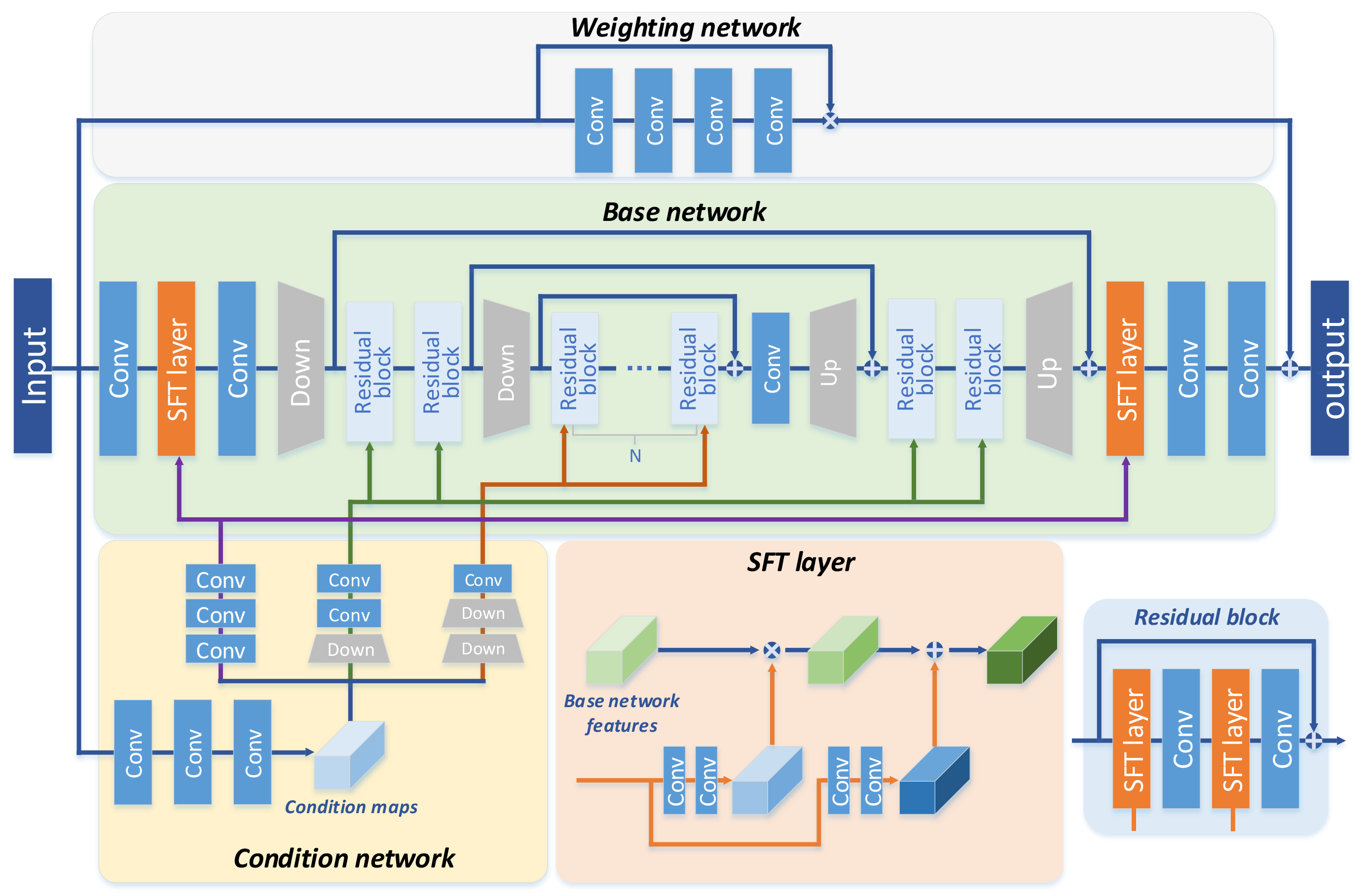HDRUNet [Paper Link]
HDRUNet: Single Image HDR Reconstruction with Denoising and Dequantization
By Xiangyu Chen, Yihao Liu, Zhengwen Zhang, Yu Qiao and Chao Dong
We won the second place in NTIRE2021 HDR Challenge (Track1: Single Frame). The paper is accepted to CVPR2021 Workshop.
BibTeX
@inproceedings{chen2021hdrunet,
title={HDRUnet: Single image hdr reconstruction with denoising and dequantization},
author={Chen, Xiangyu and Liu, Yihao and Zhang, Zhengwen and Qiao, Yu and Dong, Chao},
booktitle={Proceedings of the IEEE/CVF Conference on Computer Vision and Pattern Recognition},
pages={354--363},
year={2021}
}
Overview
Overview of the network:
Overview of the loss function:
Tanh_L1(Y, H) = |Tanh(Y) - Tanh(H)|
Getting Started
Dataset
Register a codalab account and log in, then find the download link on this page:
https://competitions.codalab.org/competitions/28161#participate-get-data
It is strongly recommended to use the data provided by the competition organizer for training and testing, or you need at least a basic understanding of the competition data. Otherwise, you may not get the desired result.
Configuration
pip install -r requirements.txt
How to test
- Modify
dataroot_LQandpretrain_model_G(you can also use the pretrained model which is provided in the./pretrained_model) in./codes/options/test/test_HDRUNet.yml, then run
cd codes
python test.py -opt options/test/test_HDRUNet.yml
The test results will be saved to ./results/testset_name.
How to train
- Prepare the data. Modify
input_folderandsave_folderin./scripts/extract_subimgs_single.py, then run
cd scripts
python extract_subimgs_single.py
- Modify
dataroot_LQanddataroot_GTin./codes/options/train/train_HDRUNet.yml, then run
cd codes
python train.py -opt options/train/train_HDRUNet.yml
The models and training states will be saved to ./experiments/name.
Visualization
In ./scripts, several scripts are available. data_io.py and metrics.py are provided by the competition organizer for reading/writing data and evaluation. Based on these codes, I provide a script for visualization by using the tone-mapping provided in metrics.py. Modify paths of the data in ./scripts/tonemapped_visualization.py and run
cd scripts
python tonemapped_visualization.py
to visualize the images.
Acknowledgment
The code is inspired by BasicSR.

